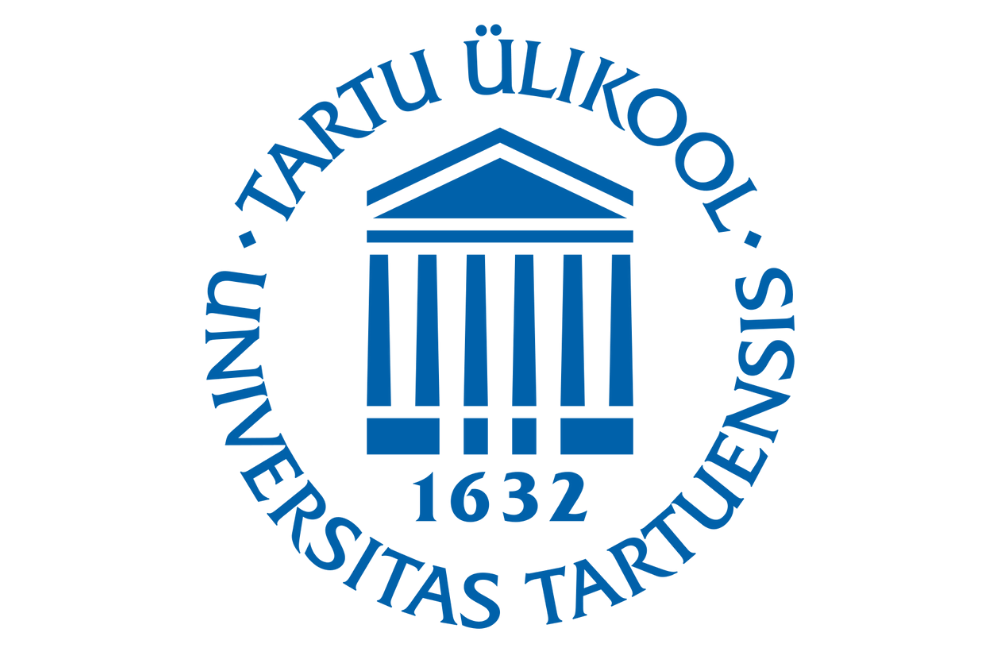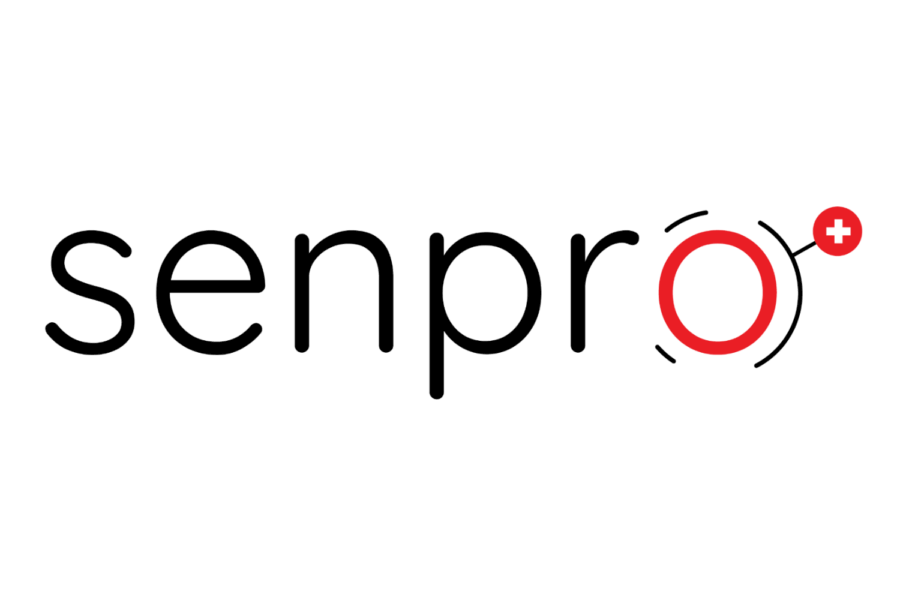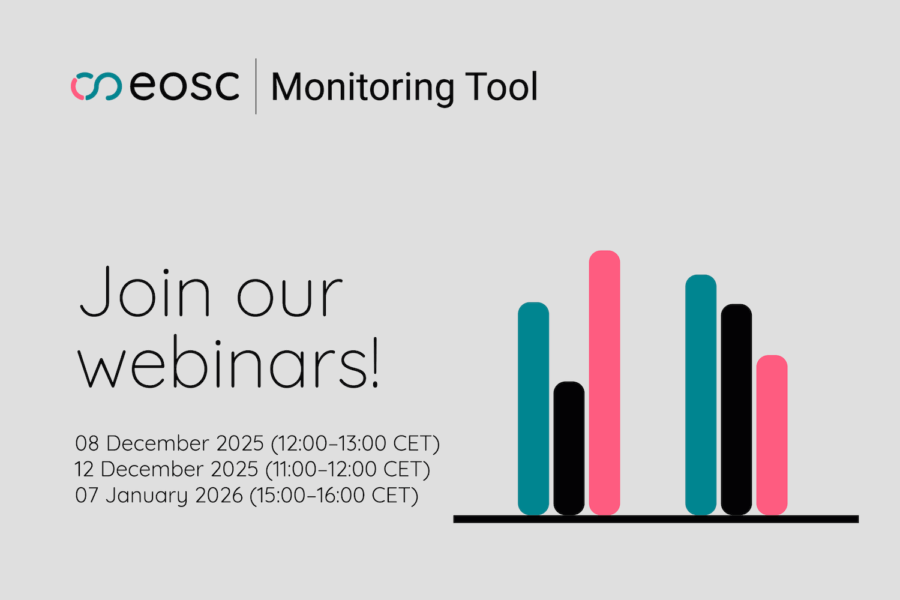In this insightful interview with Ave Ploomipuu from the University of Tartu, we explore how the EOSC-A Mandated Organisation for Estonia supports the creation and maintenance of a viable EOSC ecosystem in the country. Ave Ploomipuu is an Information Technology Consultant at the University of Tartu’s Institute of Computer Science.
Conducted by Natalia Galica (NCN Poland) and Isabel Caetano (EOSC-A), this interview is part of the series coordinated by the EOSC Focus project, in which we highlight the role of EOSC Association Mandated Organisations, and showcase their activities aimed at the implementation of EOSC.
Highlight: Estonia supports expanding free access to scientific data, while recognising the need to carefully consider large-scale investments.
How do you support the creation of a viable EOSC ecosystem in Estonia?
As an EOSC-A Mandated Organisation, the University of Tartu plays a key role in developing the EOSC ecosystem, advancing Open Science (OS) principles and contributing to the creation of open research infrastructures across Europe. The university actively participates in European research collaborations, promoting the development of open, easily accessible services, platforms, and data repositories for research data and resources. These efforts aim to support scientific breakthroughs across all research domains. The university works with other research organisations and governmental bodies to build scientific networks based on Open Science principles.
What is your role in translating European and international developments into national discussions?
The University of Tartu is involved in the formulation of science and innovation policies in Estonia. The university plays a leading role in science communication and the creation of cooperation networks, bringing international knowledge, best practices, and scientific partnerships to Estonia. It collaborates with the Estonian Research Council and other national institutions to integrate Estonia’s scientific community into global research networks.
For example, the University of Tartu was an active partner in the EOSC-Nordic project, which coordinated activities among research institutions in the Baltic and Nordic countries to promote collaboration and sharing of open research data. Through the project, Estonia could engage in a larger European research partnership.
This highlights the bi-directional role of the University of Tartu, emphasising its commitment to collaboration rather than the exclusive decision-making authority. Instead of seeking a privileged position with veto power, Estonia’s approach highlights the added value of Mandated Organisations, aiming to provide constructive input and meaningful discussions that enhance the broader EOSC framework.
How would you summarise your Open Science policy and investments?
Estonia’s Open Science strategy is based on a new approach to scientific processes, which emphasises collaboration, digital technologies, and new tools to enhance knowledge dissemination. By promoting transparency and accessibility, OS fosters the development of knowledge through collaborative networks. A key focus is ensuring that the principles of OS are practically implemented in the daily work of researchers, particularly those entering the field.
As a leading institution, the University of Tartu plays a crucial role in driving this transformation. Our primary motivators are aligning university research with FAIR principles and EU Open Science policies, promoting open access publishing, and encouraging data sharing among faculty and students. This fosters connections with leading European universities and research institutions. We are engaged in cross-disciplinary and cross-border research projects and international research consortia, where the most innovative ideas are born.
Which engagement activities have been developed to increase community representation and impact?
We have developed a range of engagement activities to strengthen community representation and impact in Open Science. Estonia has been developing its national Open Science Policy and aligning it with EOSC principles to ensure broad community participation and compliance with European research standards.
The University of Tartu and the Estonian Research Council (ETAg) also play a leading role in shaping policies to facilitate the adoption of EOSC-related infrastructure and services. On a regional scale, Estonia’s participation in the EOSC-Nordic project has strengthened our collaboration with the Baltic and Nordic countries, enhancing access to Open Science infrastructures and capacity-building initiatives.
Beyond policy efforts, Estonia prioritises community-focused activities, including training sessions, workshops, and awareness campaigns that educate researchers about EOSC, research data management, Institutional Repositories, services and FAIR principles. It also fosters discussions between researchers, policymakers, and IT specialists, ensuring an inclusive decision-making process.
Additionally, Estonia has invested in its national research data infrastructure, particularly the Estonian Scientific Computing Infrastructure (ETAIS), to enable institutions to efficiently store, share, and reuse research outputs while anticipating integration with the EOSC framework. This combination of top-down policy initiatives and grassroot community engagement ensures a broad and impactful approach.
Do you have a coordination mechanism in place?
There is no single national coordinating body to drive the implementation of EOSC across all research institutions, but there is a decentralised coordination mechanism to manage Estonia’s engagement with EOSC-A.
As Estonia’s EOSC-A Mandated Organisation, the University of Tartu plays a central role in facilitating communication between Estonian research institutions and the broader EOSC community, ensuring alignment with European Open Science initiatives. Additionally, the National EOSC Task Force, coordinated by the Estonian Research Council, oversees the implementation of EOSC-related policies and ensures that national strategies are in sync with European developments.
Beyond these structured mechanisms, Estonia is actively engaged in collaborative networks, participating in regional and EU projects. Estonian Scientific Computing Infrastructure (ETAIS) serves as the national node for EOSC-related activities. ETAIS provides computing and storage resources to the Estonian scientific community, facilitating collaboration and information exchange on EOSC matters. This integration has streamlined access to computational tools and data, bolstering research capabilities across various disciplines in Estonia.
What are Estonia’s key strengths in contributing to EOSC?
Estonia is well-positioned to benefit from and contribute to EOSC due to its advanced public digital infrastructure, strong policy support, and active participation in regional and European research initiatives. We are globally recognised for e-governance and digital services, which provide a strong foundation for the digitisation of research infrastructures.
The country’s secure and efficient digital authentication systems, such as X-Road and ID-card-based access, offer valuable models for research data management and secure sharing. The country has successfully implemented key EOSC-related policies and projects that promote Open Science, research data management, and cross-border collaboration. Estonia’s relatively small but highly innovative research community enables agile decision-making and rapid adoption of new OS initiatives. Finally, universities and research institutions are highly engaged in capacity-building.
Could you identify areas for improvement in the development of EOSC in Estonia?
As with many smaller countries, challenges remain in scaling up national efforts to match the vast resources available in larger European states. Continued investment in research data infrastructure, increased community engagement, and closer alignment with European OS initiatives will be crucial for Estonia’s long-term success in EOSC. While Estonia has invested in digital infrastructure, dedicated funding for Open Science and EOSC-related services is still limited. Sustaining and expanding research data repositories, computing resources, and FAIR data management tools requires additional long-term financial commitment. Dependence on EU-funded projects (such as EOSC-Nordic) means that national capabilities could become vulnerable when external funding decreases.
While policymakers and leading institutions support OS, many researchers are not fully aware of future EOSC services and their benefits. Resistance to change, concerns about intellectual property rights and data misuse slow down the adoption of OS practices. Finally, training gaps exist, especially among smaller research institutions and early-career scientists, in terms of FAIR data principles.
From the technical perspective, ETAIS and other national repositories must be further aligned with EOSC standards to ensure seamless integration. The cross-border interoperability still requires technical improvements, legacy systems and common metadata standards to ensure that Estonian research data is fully compatible with EOSC-related services.
From the policy perspective, National EOSC policies should be more clearly defined to ensure alignment with the long-term goals of Estonia’s research and innovation strategy.
How do Estonia’s research priorities align with the EOSC initiative, and what impact do they have?
We can find several alignments in our biomedical research teams working on Big Data-driven healthcare research, requiring secure and interoperable data sharing. We participate in EMBL-EBI integrated works to provide open access genomic and biomedical data repositories.
The ESTCube project, Estonia’s first satellite initiative, exemplifies the nation’s dedication to space research and education. While the ESTCube-1 mission primarily focused on testing innovative space technologies, such as the electric solar wind sail, its development and operational phases have indirectly benefited from the collaborative and infrastructural advancements promoted by EOSC.
While our experience with the interoperability of data is derived from EOSC, it goes beyond EOSC. Our national marine monitoring data help to assess the state of the marine environment, develop water policies, and make informed decisions and forecasts. Monitoring data collected in Estonia are transmitted annually to the European Environmental Agency (EEA) through the central repository called the European Environment Information and Observation Network (EIONET), and to the Helsinki Commission through the Marine Data Portal of the International Council for the Exploration of the Sea (ICES).
Beyond Estonia, EOSC’s impact is evident across Europe through various use cases that demonstrate its value. EOSC extends its benefits not only to the research community but also to society.
About Ave Ploomipuu

Ave Ploomipuu is an Information Technology Consultant at the Institute of Computer Science, University of Tartu. She also serves as Estonia’s Delegate to the EOSC Steering Board.
About University of Tartu
The University of Tartu is the oldest and largest higher education institution in Estonia and has been at the centre of Estonian academic life for almost four centuries. It is ranked among the top 1.2% of universities worldwide, making it one of the leading universities in Northern Europe. With 13 000 students and 3 000 staff members, it operates across a diverse range of fields, all connected by the power of curiosity.







